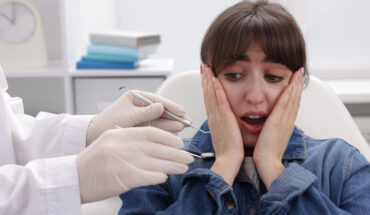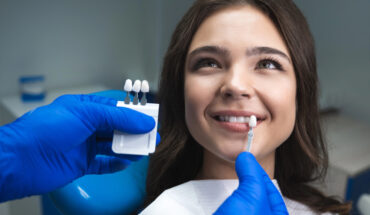
Orthodontics has evolved far beyond the realm of metal braces, clinical chairs, and awkward teenage smiles. Today, it represents something much broader—a lifestyle choice, a social signal, and even a form of self-expression. In the 21st century, orthodontics isn’t just about straightening teeth; it’s about aligning one’s confidence, image, and wellbeing with the demands of an increasingly aesthetic-conscious and health-aware society.
The field has transformed from a corrective medical procedure into a fusion of science, psychology, and artistry. As global culture continues to valorize self-care and visual identity, orthodontics now stands at the intersection of healthcare innovation and personal branding—its role shifting from functional correction to lifestyle enhancement.
From Medical Necessity to Modern Identity
In the past, orthodontic treatment was viewed as a necessity—something endured to fix overcrowded teeth or misaligned bites. But with the rise of digital aesthetics and the global “smile economy,” patients are redefining why they seek orthodontic care.
Modern patients are not merely fixing their teeth; they are refining how they present themselves to the world. Social media has played a profound role in this shift. A well-aligned smile has become shorthand for success, self-discipline, and vitality. As a result, orthodontics now functions as a bridge between healthcare and personal development—an investment in both oral health and self-perception.
Even the language surrounding treatment has changed. What was once “braces” has become “a smile journey.” Orthodontic clinics now curate experiences that merge clinical precision with emotional design: ambient lighting, digital consultation rooms, 3D simulations, and post-treatment smiles reveal videos all form part of a narrative that celebrates transformation.
Technology and the Aesthetic Mindset
Technology has been central to this cultural redefinition. Invisalign, 3D scanning, and AI-driven smile design systems have democratized access to treatments that once required bulky, metallic apparatuses. Clear aligners, in particular, have blurred the line between healthcare and lifestyle accessory—aligning teeth discreetly while fitting seamlessly into professional and social lives.
These innovations do more than enhance convenience; they amplify confidence. Patients can visualize their future smiles before treatment begins, making orthodontics an exercise in imagination as much as anatomy. In a sense, the modern orthodontist is no longer just a clinician—they are a designer of possibilities.
Artificial intelligence now predicts movement patterns, while 3D printing accelerates the creation of bespoke aligners and retainers. This blend of precision engineering and personalization appeals to a generation accustomed to curated digital experiences. It’s orthodontics meeting the mindset of the modern consumer—hyper-personalized, visually driven, and outcome-focused.
Wellbeing as the New Motivation
The motivations behind orthodontic treatment are also expanding. Beyond the cosmetic, patients increasingly understand the health benefits of proper alignment—improved digestion, speech, and even posture. A straighter smile contributes to better oral hygiene and reduces long-term dental costs.
But beyond physical benefits, orthodontics now carries emotional and psychological weight. A confident smile can influence mental health, social interactions, and even professional performance. Patients often report feeling more authentic and self-assured after treatment, suggesting that orthodontics operates not only on the body but on the psyche.
This convergence of wellbeing and aesthetics marks a pivotal shift. Orthodontics is no longer a finite treatment—it’s part of an ongoing philosophy of health maintenance and self-respect. In the same way that fitness and skincare have become lifestyle habits, orthodontic care is entering the same cultural lexicon: an act of investment in one’s long-term wellbeing.
The Rise of Dental Tourism and Global Accessibility
One of the most intriguing dimensions of modern orthodontics is its globalization. As treatments become more sophisticated and costs remain high in certain regions, many patients are exploring overseas options. Dental tourism is expected to continue growing as international clinics offer world-class orthodontic treatment at competitive prices, often bundled with travel and recovery experiences.
Countries across Asia, Eastern Europe, and Latin America are emerging as orthodontic destinations, combining advanced clinical technology with hospitality-driven patient care. For many, it’s an opportunity to merge the practical with the pleasurable—to transform a dental treatment into an immersive cultural experience.
However, this trend also reflects a deeper shift: orthodontics is no longer confined by geography or socioeconomic boundaries. The digital era enables remote consultations, virtual monitoring, and follow-up care across continents. Orthodontic treatment has become borderless—accessible, efficient, and globally networked.
Orthodontics as a Social Statement
The decision to undergo orthodontic treatment now signals more than just a desire for straight teeth—it communicates values. It suggests self-awareness, confidence, and commitment to personal growth. For adults especially, choosing orthodontic care in later life challenges outdated notions of age and beauty, reinforcing that transformation is timeless.
Brands and clinics have adapted accordingly, offering aesthetic options that align with modern lifestyles: gold-trimmed braces for fashion-forward patients, aligners designed for active professionals, and payment plans that rival the accessibility of fitness memberships. The orthodontic experience has become aspirational—positioned alongside wellness retreats and self-improvement programs.
The Future: A Holistic Smile Culture
As technology, psychology, and global mobility continue to intertwine, orthodontics will likely evolve into a more holistic field—one that integrates nutrition, sleep, and even mindfulness into treatment programs. Future clinics may resemble wellness studios more than traditional practices, where patients are coached on posture, stress reduction, and digital habits that affect oral health.
In this reimagined landscape, orthodontics becomes more than a service—it becomes a culture. One that reflects society’s deepening understanding of interconnected wellbeing, identity, and design.
The modern orthodontic experience represents far more than the alignment of teeth; it is the alignment of values, lifestyles, and aspirations. It’s where precision science meets emotional storytelling—where the clinical chair transforms into a platform for personal evolution.
As dental tourism is expected to continue growing and technology reshapes accessibility, orthodontics stands poised at the frontier of global wellness culture. The future smile is not just straight—it’s intentional, expressive, and deeply human.




